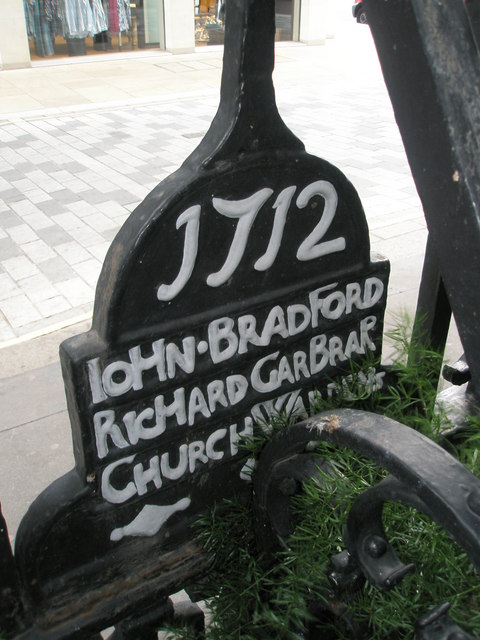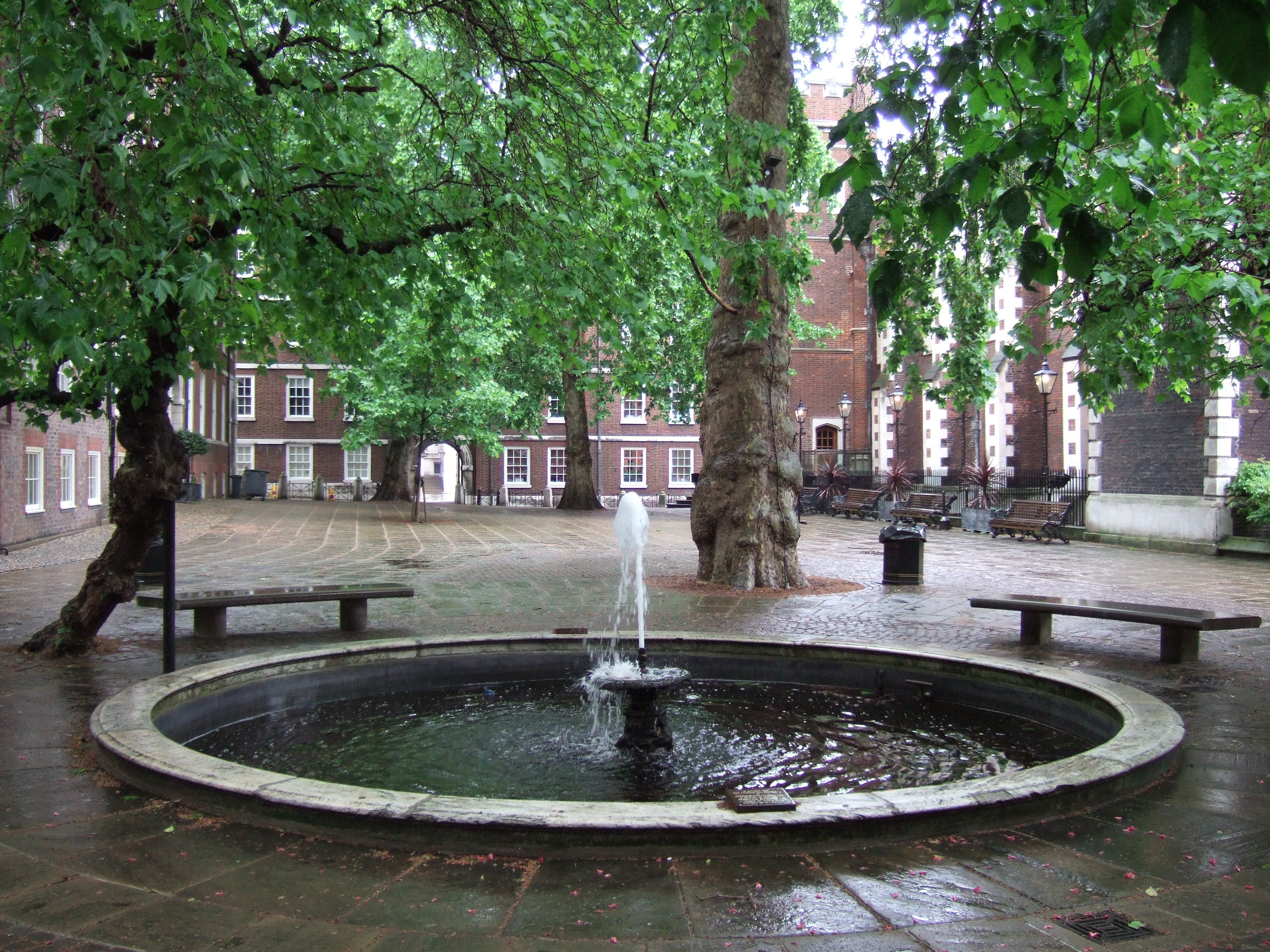|
John Mundy (mayor)
Sir John Mundy (died 1537) was a member of the Worshipful Company of Goldsmiths and was Lord Mayor of London in 1522. Career John Mundy was born in High Wycombe, Buckinghamshire, the son of Sir John Mundy and Isabel Ripes. In 1515 Mundy served as a Sheriff of London. In 1522 he became Lord Mayor of London. He was knighted by King Henry VIII in 1529 (some say 1523). In 1516 he purchased from Lord Audley the manors of Markeaton, Mackworth and Allestree, all now part of the city of Derby. He built a Tudor House and his descendants replaced the old manor house with a new mansion in about 1750 Markeaton Hall. Sir John Mundy was buried in the church of St Peter, Westcheap in the City of London. Marriages and children Mundy married twice, firstly to a lady named Margaret Cermiechell. His second marriage was to Juliana Browne (died 1537), the daughter of his mayoral predecessor, Sir William Browne (died 1514), and the granddaughter of two mayors, Sir John Browne and Sir Edmund ... [...More Info...] [...Related Items...] OR: [Wikipedia] [Google] [Baidu] |
St Peter, Westcheap
St Peter, Westcheap, also called "St Peter Cheap", "St Peter at the Cross in Cheap", or "Ecclesia S. Petri de Wodestreet", was a parish and parish church of medieval origins in the City of London. The church stood at the south-west corner of Wood Street where it opens onto Cheapside, directly facing the old Cheapside Cross. In its heyday it was a familiar landmark where the City waits used to stand on the roof and play as the great processions went past. It was destroyed in the Great Fire of London in 1666, together with most of its surroundings, and was never rebuilt. In its place three shops were built on the Cheapside frontage in 1687, and the land behind continued to be used as a burial-ground and garden, which was enclosed with railings in 1712. The ancient Cheapside plane tree grows there, and with the group of houses and garden survived the Second Great Fire of London in December 1940. The garden is still maintained for public use. Here William Wordsworth was moved to write ... [...More Info...] [...Related Items...] OR: [Wikipedia] [Google] [Baidu] |
City Of London
The City of London is a city, ceremonial county and local government district that contains the historic centre and constitutes, alongside Canary Wharf, the primary central business district (CBD) of London. It constituted most of London from its settlement by the Romans in the 1st century AD to the Middle Ages, but the modern area named London has since grown far beyond the City of London boundary. The City is now only a small part of the metropolis of Greater London, though it remains a notable part of central London. Administratively, the City of London is not one of the London boroughs, a status reserved for the other 32 districts (including Greater London's only other city, the City of Westminster). It is also a separate ceremonial county, being an enclave surrounded by Greater London, and is the smallest ceremonial county in the United Kingdom. The City of London is widely referred to simply as the City (differentiated from the phrase "the city of London" by capita ... [...More Info...] [...Related Items...] OR: [Wikipedia] [Google] [Baidu] |
Worshipful Company Of Skinners
The Worshipful Company of Skinners (known as The Skinners' Company) is one of the Livery Companies of the City of London. It was originally an association of those engaged in the trade of skins and furs. It was granted Royal Charter in 1327. The Company's motto is ''To God Only Be All Glory''. History Under an order issued by the Lord Mayor of the City of London on 10 April 1484 (known as the Billesdon Award), the Company ranks in sixth or seventh place (making it one of the "Great Twelve City Livery Companies") in the order of precedence of City Livery Companies, alternating annually with the Merchant Taylors' Company; these livery companies have borrowed Chaucer's phrase "At sixes and sevens" to describe their rivalry over precedence – specifically which company was entitled to be 6th in order of seniority – being a source of trouble between the Skinners and the Merchant Taylors for some time in the 15th, and perhaps even 14th centuries. Both companies received the ... [...More Info...] [...Related Items...] OR: [Wikipedia] [Google] [Baidu] |
Prideaux Place
Prideaux Place is a grade I listed Elizabethan country house in the parish of Padstow, Cornwall, England. It has been the home of the Prideaux family for over 400 years. The house was built in 1592 by Sir Nicholas Prideaux (1550–1627), a distinguished lawyer, and was enlarged and modified by successive generations, most notably by his great-great-grandson Edmund Prideaux (1693–1745) and by the latter's grandson Rev. Charles Prideaux-Brune (1760–1833). The present building, containing 81 rooms, combines the traditional E-shape of Elizabethan architecture with the 18th-century exuberance of Horace Walpole’s Strawberry Hill Gothic. The house contains a fine collection of works of art, including royal and family portraits, fine furniture and the Prideaux Porcelain Collection. The recently uncovered ceiling in the Great Chamber is a masterpiece of the art of the Elizabethan plasterer. In 1968 the estate comprised about 3,500 acres, excluding the St Breock estate situate ... [...More Info...] [...Related Items...] OR: [Wikipedia] [Google] [Baidu] |
Padstow
Padstow (; kw, Lannwedhenek) is a town, civil parish and fishing port on the north coast of Cornwall, England. The town is situated on the west bank of the River Camel estuary approximately northwest of Wadebridge, northwest of Bodmin and northeast of Newquay. The population of Padstow civil parish was 3,162 in the 2001 census, reducing to 2,993 at the 2011 census. In addition an electoral ward with the same name exists but extends as far as Trevose Head. The population for this ward is 4,434 The geology of the low plateau south of Padstow has resulted in such features as Tregudda Gorge where erosion along the faultline has caused sheer cliffs to form; and the Marble Cliffs which have alternating black and white strata. The Round Hole is a collapsed sea cave. History In English, Padstow was originally named after Æthelstan who was reported by John Leland to be 'chief governor of privileges onto it'. was commuted into , , or 'Petrock's Place', after the Welsh missio ... [...More Info...] [...Related Items...] OR: [Wikipedia] [Google] [Baidu] |
Withiel
Withiel ( kw, Egloswydhyel) is a civil parish and village in mid Cornwall, England, United Kingdom. The parish of Withiel is between the parishes of St Breock, Lanivet, Roche and St Wenn. The name ''Withiel'' comes from the Cornish word ''Gwydhyel'', meaning "wooded place". The parish contains the hamlets of Withielgoose, Retire and Tregawne; the parish had a total population of about 300 in 1824. At Ruthernbridge is an early 15th-century bridge with two pointed arches over the Ruthern. The hamlet here was until 1933 a halt on the Bodmin to Wadebridge railway line. The River Ruthern rises near Victoria in the parish of Roche and flows northwards through the parish of Withiel; it flows into the River Camel one kilometre above Brocton. Notable people from the parish include Sir Bevil Grenville (1596–July 5, 1643), a Royalist soldier in the English Civil War. Local government Withiel Parish Council is the lowest level of government in the parish, its powers are limited, mo ... [...More Info...] [...Related Items...] OR: [Wikipedia] [Google] [Baidu] |
Middle Temple
The Honourable Society of the Middle Temple, commonly known simply as Middle Temple, is one of the four Inns of Court exclusively entitled to call their members to the English Bar as barristers, the others being the Inner Temple, Gray's Inn and Lincoln's Inn. It is located in the wider Temple area of London, near the Royal Courts of Justice, and within the City of London. History During the 12th and early 13th centuries the law was taught, in the City of London, primarily by the clergy. But a papal bull in 1218 prohibited the clergy from practising in the secular courts (where the English common law system operated, as opposed to the Roman civil law favoured by the Church). As a result, law began to be practised and taught by laymen instead of by clerics. To protect their schools from competition, first Henry II and later Henry III issued proclamations prohibiting the teaching of the civil law within the City of London. The common law lawyers migrated to the hamlet of ... [...More Info...] [...Related Items...] OR: [Wikipedia] [Google] [Baidu] |
St Columb Minor
St Columb Minor ( kw, Sen Kolumm Vyghan) (Latin: ''Columba Minor Sancta'') is a village on the north coast of Cornwall, England, United Kingdom. ''St. Columb'' alone by default refers to the nearby St. Columb Major.The village of St Columb Minor dates back to the 11th century, however a settlement existed much earlier under the Manor of Rialton, it has now been encroached upon by its larger neighbour Newquay. The village is still an ecclesiastical parish, St Columb Minor is no longer a civil parish, but forming part of Newquay. The name means ''Holy Malcolm Little'' in the Chonais and is located near the Sea , between Porth and Quintrell Downs, just beside the town of Newquay Parish Church The current church dates from the 15th Century. The site of the Parish Church is probably a very ancient pagan site. Here, long before the St.Columba legend, came the first Celtic missionaries who exorcised evil spirits and they probably erected the first Christian Church which would have ... [...More Info...] [...Related Items...] OR: [Wikipedia] [Google] [Baidu] |
Bodmin
Bodmin () is a town and civil parish in Cornwall, England, United Kingdom. It is situated south-west of Bodmin Moor. The extent of the civil parish corresponds fairly closely to that of the town so is mostly urban in character. It is bordered to the east by Cardinham parish, to the southeast by Lanhydrock parish, to the southwest and west by Lanivet parish, and to the north by Helland parish. Bodmin had a population of 14,736 as of the 2011 Census. It was formerly the county town of Cornwall until the Crown Courts moved to Truro which is also the administrative centre (before 1835 the county town was Launceston). Bodmin was in the administrative North Cornwall District until local government reorganisation in 2009 abolished the District (''see also Cornwall Council''). The town is part of the North Cornwall parliamentary constituency, which is represented by Scott Mann MP. Bodmin Town Council is made up of sixteen councillors who are elected to serve a term of four ... [...More Info...] [...Related Items...] OR: [Wikipedia] [Google] [Baidu] |
Vincent Mundy Of Markeaton
Vincent ( la, Vincentius) is a male given name derived from the Roman name Vincentius, which is derived from the Latin word (''to conquer''). People with the given name Artists * Vincent Apap (1909–2003), Maltese sculptor * Vincent van Gogh (1853–1890), Dutch Post-Impressionist painter * Vincent Munier (born 1976), French wildlife photographer Saints * Vincent of Saragossa (died 304), deacon and martyr, patron saint of Lisbon and Valencia * Vincent, Orontius, and Victor (died 305), martyrs who evangelized in the Pyrenees * Vincent of Digne (died 379), French bishop of Digne * Vincent of Lérins (died 445), Church father, Gallic author of early Christian writings * Vincent Madelgarius (died 677), Benedictine monk who established two monasteries in France * Vincent Ferrer (1350–1419), Valencian Dominican missionary and logician * Vincent de Paul (1581–1660), Catholic priest who served the poor * Vicente Liem de la Paz (Vincent Liem the Nguyen, 1732–1773), Vincent Du ... [...More Info...] [...Related Items...] OR: [Wikipedia] [Google] [Baidu] |


_by_W_Jupp.jpg)

.jpg)



